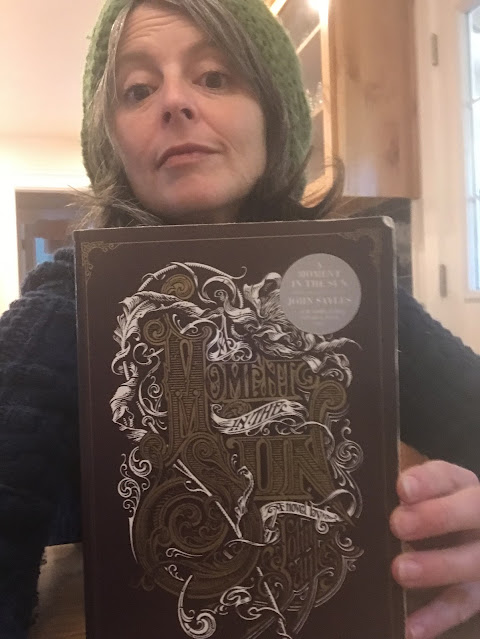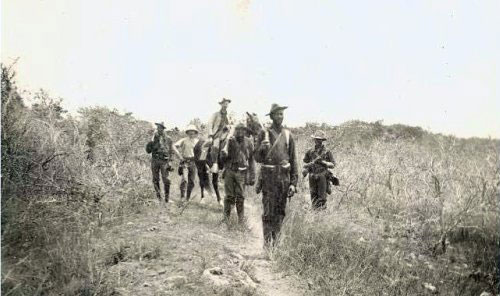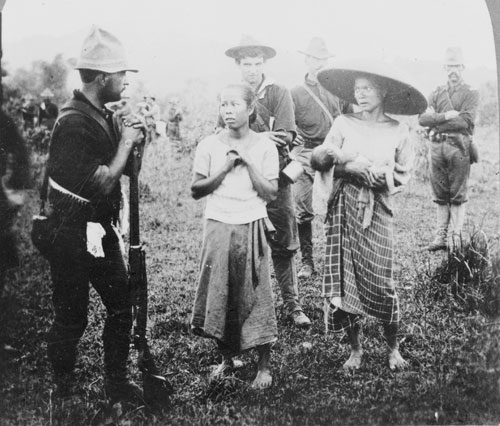A Moment in the Sun - a literary journey
I just finished reading this huge novel, A Moment in the Sun by John Sayles. It felt really important to me, the experience of reading this, so I wanted to expand on it a little bit more.
John Sayles is an award winning film director whose work I have enjoyed in the past. Anybody seen any of them? Some people complain that his films are more like novels and I think that's why I like them. My favorite is Matewan, about the coal miner strike in 1920 (that featured a young Bonnie Prince Billy in an amazing role as the young preacher). We also just rewatched an old favorite, The Secret of Roan Inish, which I had forgotten was also a John Sayles film. I love the way he digs into the cultural relevance and communities of place.
But I hadn't realized he is also a novelist. His 1977 novel, Union Dues, even won the National Book Award. I didn't know any of that when I picked this book up and was surprised to see his name as author. I could tell at once that it was gritty and adventurous and that it started in the Klondike gold rush with some rough characters. That's a period I know little about and find intriguing. It mirrors the history of my own geographical region here in Placerville, history defined by the California gold rush and I knew that John Sayles would treat the problematic elements of this time period of destructive resource exploitation with attention to detail and care. He writes the stories of the underdogs, the outsiders, the broken and forgotten, the fighters, dreamers, and even reluctant heroes. He writes about resignation and change and grit.
prisoner laborers at a turpentine camp
the Denver Rio Grande railroad
I put this massive book in the stacks by my bedside. I knew I'd eventually read it, but it was intimidating and felt like a big commitment, so it took a while to really get started. I picked it up again on March 7 and read enough pages that I met a female character ("they call me Sparrow but my Christian name is Addie Lee" page 41) and was hooked. I finished reading it at 11:00 p.m on March 29.
"Smokey holds the ropes apart and Hod ducks in to more jeers than applause. He stands trying to look above the men's howling faces and sees the red haired girl from the little room leaning against the far wall with her arms crossed. He wishes she wasn't there."
In the first few chapters we encounter the treacherous Golden Stairs in the Klondike, robbery and betrayal, illegal boxing, a harrowing turpentine camp in a northern forest, escaped prisoners, a blood ritual to pledge to a secret revolutionary society, and a racist Southern judge. All in the first 50 pages.
This novel spans a few years around the turn of the century (1898-1901) and is truly epic in scope, with characters and settings ranging from Alaska to Montana to North Carolina, to Cuba, Hawaii, China, and the Philippines.
Did you know about the Wilmington coup and massacre of 1898? I am sorry to say I did not. I didn't know anything. Reading certain parts of this book actually hurt as I felt reality shifting around me. I wept tears of grief to imagine what humans are capable of. I didn't have to research before I knew it was all real, based on real history. It had to be. Still, I was devastated to find out that I was right. These events are real. A lot of the details and some of the characters are real. Even though I was reading a fictionalized account, this book did what good books do, it taught me truths and expanded my heart and it evoked empathy so much that my heart ached. I didn't know much about the restoration period in the south or the "in between" states and I didn't know much about the beginning of Jim Crow. After reading this book, my heart is so full of devastating knowledge. And it's all true. I've always suspected that anything we can imagine has probably happened. When I realize some of the horrific attitudes and behaviors that were normal in 1900, I see that we've come a long way, but I also reexamine ways we think now. What will break our descendants hearts to imagine from our lifetimes?
Do you know much about the Spanish-American War? I knew very little. I didn't know what happened in Cuba, or that the war in the Philippines quickly bloomed into a bloody battle between the U.S. and the Philippino insurrectos that were fighting for the independence that they'd been promised.
I didn't know the overt role thatAmerican racism played into crucial events in the beginning of overseas American Imperialism. I mean, I knew, but I didn't KNOW.
25th infantry in Missoula
Did you know that four black regiments fought in the Spanish American war, the 9th and 10th cavalry and the 24th and 25th infantry and that many thousands more served as volunteers? Black soldiers won many medals for bravery under fire and faced unspeakable conditions. They were considered "immune" because some erroneously believed that black people were immune to tropical diseases. The communities back home and some of the soldiers themselves were torn on the idea of fighting for a country that had so relentlessly oppressed them. Although many soldiers hoped their brave actions in battle would help to improve racial conditions at home, "African Americans gained little from their important role in the war," according to the Rise and Fall of Jim Crow by PBS.
I don't know where this infantry is fighting but they look weary.
Philippino insurgents
opium den in the Philippines
Colonel Theodore Roosevelt
zoopraxiscope
early sound test for moving pictures
bicycle corps, 1896 - missoula to st. louis
Ojibwa family
stampeders on the Chilkoot trail
Have you ever imagined what Manhattan was like when horses were machines? Have you imagined what they did when the "machines" break down? It is gruesome, and your heart will break once you can truly imagine, but I am willing to be a witness to gruesome moments in history because I feel we have a responsibility to learn and to therefore grow our empathy through stories.
El Caney, Cuba
Phillipines, 1899
I don't even want to say too much more in case you read this book, which I hope many will although I realize it's a huge undertaking. Also, all the time at the bookstore I meet people, usually women, who don't want their fiction too dark. Life is already hard. So I get it. But for me, I've been compelled to read all my life and I have always learned through fiction. So this being my m.o., I guess I feel a bit of a responsibility to read the hard stuff, the edgy and the terrifying and the heartbreaking. Even just learning more about the foundation of US relationships with the Philippines and other Pacific islands has been an important step for me in growing and learning. Understanding some of the building blocks of our racial history in this country is also crucial. The way our racial foundations spread out to everything for centuries. There is so much more to know. There are so many stories untold. We can expand our hearts and mind learning through these stories.
All of the photos above are taken from the bonus materials on McSweeneys, who published this novel, in which Sayles provides photos and documents and annotations that served as inspiration for the text. You can also find a list of works consulted full of eye opening materials, mostly non-fiction and also including biography and fiction.
I went from the huge world of this book to the small story of my own family.
I grew up with stories of my great grandparents' life in the Philippines.
Beatty family passport, Philippines, 1919
After I finished the book, I realized how little I knew about that connection to the Philippines. I mostly only knew that Beattys are notorious for loving white rice, my sister and I included. My dad infamously brought a rice cooker to his first date with my mom, a little Thanksgiving dinner that she had prepared, to make sure they had white rice with the meal. She was only a little bit offended. ;)
So seeking more knowledge, I went to our family history facebook page where some relatives have posted many old photos and documents from Beatty history. I always knew that my great grandfather, Walter Kirker Beatty, a descendant of Ulysses S. Grant, was a doctor in the Philippines in the early 1900s. But first, he worked in Honduras where he met his young bride, Matilde Garcia, daughter of a Spanish general. They fell in love, and he swept her up and took him with him to the Philippines in 1905.
Digging a little deeper, I found out more. What I hadn't realized is that he actually served in the U.S. military during the Spanish American war. He was a hospital steward in Cuba. Later he served as a contract surgeon with the American army, posted in the Philippines, then Fort Huachuca, Arizona territory, which is also a setting in the book, and the Presidio in San Francisco, back to the Philippines, and the Presidio again. It was in 1903 that he left the military and went to Honduras as a private citizen, serving as a physician at at the Rosario mine. He and Matilde married July 9, 1904 in San Juancito, Honduras.
It's like they are straight out of a John Sayles story. So many of the intricacies are lost to me though.
This is my great grandfather, Walter Kirker Beatty, at their home in Manila. I believe this photo is from about 1913.
1906, first son John and his parents, Dr. Walter Kirker Beatty and Matilde Garcia Beatty, Manila, P.I. She was pregnant with their first son on the boat from San Francisco to Manila. Here is an excerpt from a letter that Walter sent to his mother Mary Jane back in Washington D.C:
Dear mother,
As we are now but a little over one day from Honolulu, I will get a few lines to you.....My love for Matilde is overwhelming & abiding and I shall love my baby for I already love her. We have already named her in our insane love, we are going to call her Inez (which is Spanish for Agnes, you will have to pronounce it as ee-ness', accent on the last syllable) We don't allow ourselves to think of a boy.
Note; It's a 12 page letter telling of Matilde's sickness and weakness and how he looking forward to their future in the Philippines.
Guess what. They ended up having eight sons!
Here is Matilde with her two year old son John. She is only 19 years old herself in this photo; this must have been around 1907. Their second son Frank was born August 23, 1906. Maybe he was too fussy or something and was not shown in this photograph? Six sons were born to them in the Philippines, two more born after they moved to Delhi, CA in 1918. My own grandfather, Carlos Garcia Beatty, the fourth son, always known as "Buck," was born December 13, 1908. The brother right before him, little George, died as a four month old infant. Maybe she was pregnant with him in this picture? I have so many unanswered questions. I have always felt drawn to my great grandmother and want to understand her experiences more fully.
The frontispiece says it best:
In the drawing Uncle Sam and Lady Liberty stand side by side on the shore.
We see them from behind, but know, by their dress, whose pensive vista we are sharing...
We are looking west.
We can't see their faces, of course, can't tell if they are seeking adventure, longing for treasure, anticipating unknown horrors. That will come later.
I thought about the ways we are all woven together. The ways stories live and reshape us again and again, later, and later.
And that's about it. Thank you for reading along with me.































Comments
And eight sons!! Your family history is amazing! Betting none of those sons were named Inez. Maybe one of them used the name for one of the cousins… 💕💕💕💕